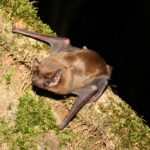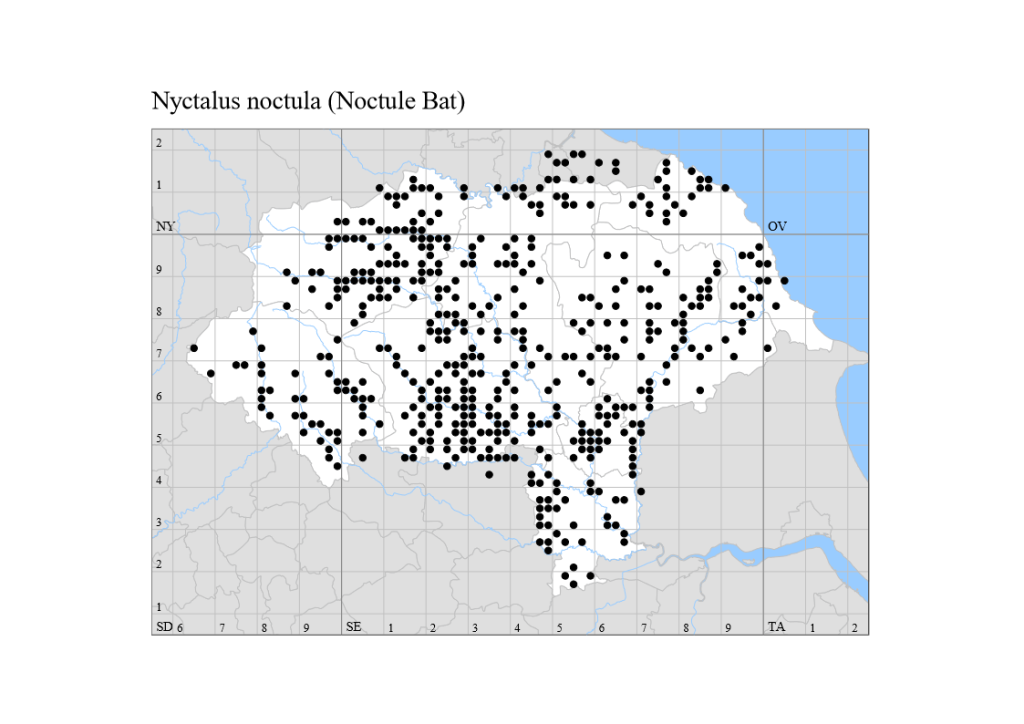
Noctule Bat is the larger and more common relative of Leisler’s Bat. Noctule bats are traditionally associated with trees where they roost in sizeable hollows such as rot holes and woodpecker holes. However, there are at least two roosts in less usual locations in the county: one in a concrete bridge in York and another in the stone chimney of a house in the Dales. Weighing in at more than 30g this is a fast and high flying species that can travel long distances in an evening. Most often it can be spotted early in the evening looking vaguely similar to a Swift. Echolocation calls typically peak around 20kHz, but can be as low as 16kHz bringing them within the audible range of some people. These frequencies are ideally suited to locating large flying insects such as moths and beetles; the bats can be seen making sudden dives to capture insects that they have detected below. Bat roosts in trees are generally more difficult to locate than those in buildings, especially when the bat may be some distance from its roost before being detected. Most of the plotted records are of bats in flight. These suggest that the species in widespread in the county, though only a few roosts have ever been located.

